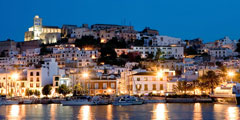Paestum
Paestum has the only well-preserved Greek Temples north of Sicily (site open every day from 9:00 a.m. to one hour before sunset - the museum is open every day from 9:00 a.m. to 7:00 p.m., except the first and the third Monday of the month).
It spreads out across a large area at the bottom end of the Piana del Sele, a wide flat plain grazed by the buffalos that produce Southern Italy's finest mozzarella.
Paestum, or Poseidonia as it was then known, was founded by the Greeks from Sybaris in the sixth century BC, and later, in 273 BC, colonized by the Romans, who Latinized the name.
By the ninth century a combination of malaria and Saracen raids had decimated the population and left the buildings deserted. The site was gradually overtaken by thick forest and it was not until the 18th century that it was rediscovered, by chance, during the building of a road ordered by Charles III.
Things to see
The temples
Neptune, Basilica and Ceres are among the best-preserved Doric temples in Europe. The Temple of Neptune, dating from about 450 BC, is the most complete, with only its roof and parts of the inner walls missing. The Basilica of Hera, built a century or so earlier, retains its double rows of columns, while the Temple of Ceres at the northern end of the site was used as a Christian Church for a time.
The three golden stoned temples are not the only things to have survived. An amphitheatre and much of the 4 km circuit of walls still stand to some height, along with some of the towers and gates.
Museum
The museum houses findings from the site and the surroundings. The highlight of the museum is the Tomb of the Diver: believed to be the only existent example of Greek wall painting.
